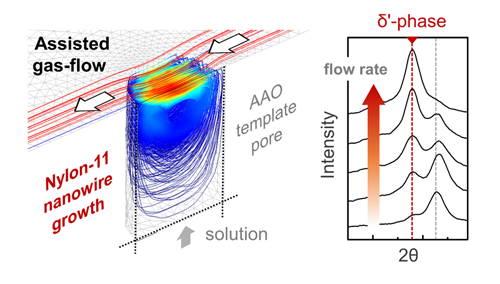Energy harvesting from ubiquitous ambient vibrations represents a viable energy solution for the rapidly increasing number of low-power autonomous, wireless, portable and wearable electronic devices. Triboelectric generators have recently generated tremendous interest in this regard as they are capable of converting mechanical energy from the relative motion of two dissimilar materials into useful electricity, based on contact electrification and electrostatic induction arising from the materials having different electron affinities. In order to achieve high levels of energy harvesting performance, materials with electron-donating tendencies must be paired with those with electron-accepting tendencies. The bulk of the literature focuses on the latter, as these typically include materials that are easier to synthesise. Nylon-11 belongs to the less-explored family of synthetic and organic electron-donating materials, although the crystalline phase required for superior triboelectric performance has remained elusive in the bulk due to the typically harsh processing conditions. We therefore demonstrate a novel fabrication method by which Nylon-11 nanowires of the required crystalline phase can be achieved with controlled precision, using a simple one-step gas-flow assisted template wetting approach. We show that our Nylon-11 nanowires exhibit remarkable triboelectric properties, including inherent electrical polarization, which leads to enhanced energy harvesting performance.
Figure: Highly crystalline and “self-poled” δʹ-phase Nylon-11 nanowires, fabricated using a novel gas‑flow assisted nano-template infiltration method, exhibit enhanced triboelectric energy harvesting performance.
Y. S. Choi, Q. Jing, A. Datta, C. Boughey and Sohini Kar-Narayan, "A triboelectric generator based on self-poled Nylon-11 nanowires fabricated by gas-flow assisted template wetting", Energy & Environmental Science (2017)

